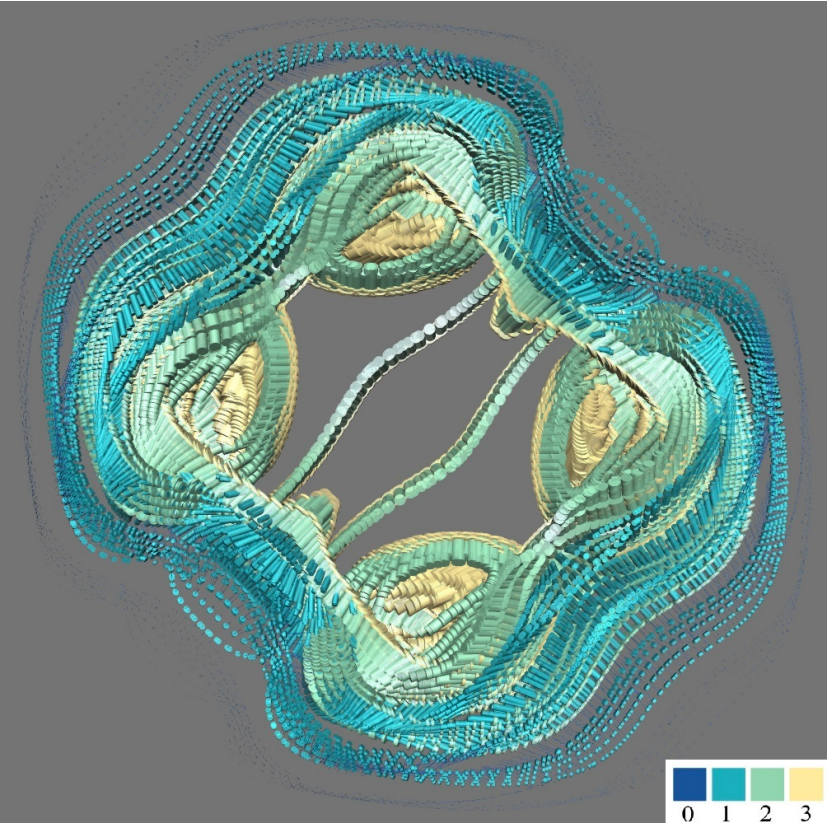Evaluating Glyph Design for Showing Large-Magnitude-Range Quantum Spins
Henan Zhao, Garnett W. Bryant, Wesley Griffin, Judith E. Terrill, Jian Chen
DOI: 10.1109/TVCG.2022.3232591
Room: 109
2023-10-25T23:57:00ZGMT-0600Change your timezone on the schedule page
2023-10-25T23:57:00Z

Keywords
Separable and integral dimension pairs;bivariate glyph;3D glyph;quantitative visualization;large-magnitude-range
Abstract
We present experimental results to explore a form of bivariate glyphs for representing large-magnitude-range vectors. The glyphs meet two conditions: (1) two visual dimensions are separable; and (2) one of the two visual dimensions uses a categorical representation (e.g., a categorical colormap). We evaluate how much these two conditions determine the bivariate glyphs’ effectiveness. The first experiment asks participants to perform three local tasks requiring reading no more than two glyphs. The second experiment scales up the search space in global tasks when participants must look at the entire scene of hundreds of vector glyphs to get an answer. Our results support that the first condition is necessary for local tasks when a few items are compared. But it is not enough for understanding a large amount of data. The second condition is necessary for perceiving global structures of examining very complex datasets. Participants’ comments reveal that the categorical features in the bivariate glyphs trigger emergent optimal viewers’ behaviors. This work contributes to perceptually accurate glyph representations for revealing patterns from large scientific results. We release source code, quantum physics data, training documents, participants’ answers, and statistical analyses for reproducible science at https : //osf.io/4xcf5/?viewonly = 94123139df9c4ac984a1e0df811cd580.